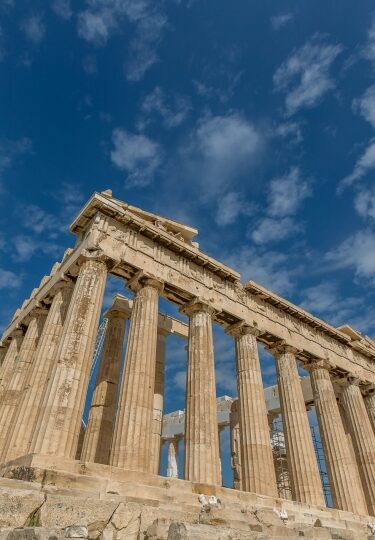You can hardly turn a corner in Europe without stumbling upon a majestic monument—indeed, the continent is home to an embarrassment of riches when it comes to incredible landmarks. Whether it’s the Eiffel Tower in Paris, the Colosseum in Rome, or the Leaning Tower of Pisa, many of the most famous landmarks in Europe require no introduction.
Of course, with so many famous monuments in Europe, you certainly won’t lack for choice on your next big European adventure—the only hard part will be prioritizing which one to see first. From mysterious 5,000-year-old monoliths to a whimsical work-in-progress basilica, each of these sites comes loaded with spectacular architecture, artwork, and history.
Here, we’ve rounded up 9 of the most famous landmarks in Europe, each well deserving of a spot on your Europe bucket list.
1: Eiffel Tower, Paris
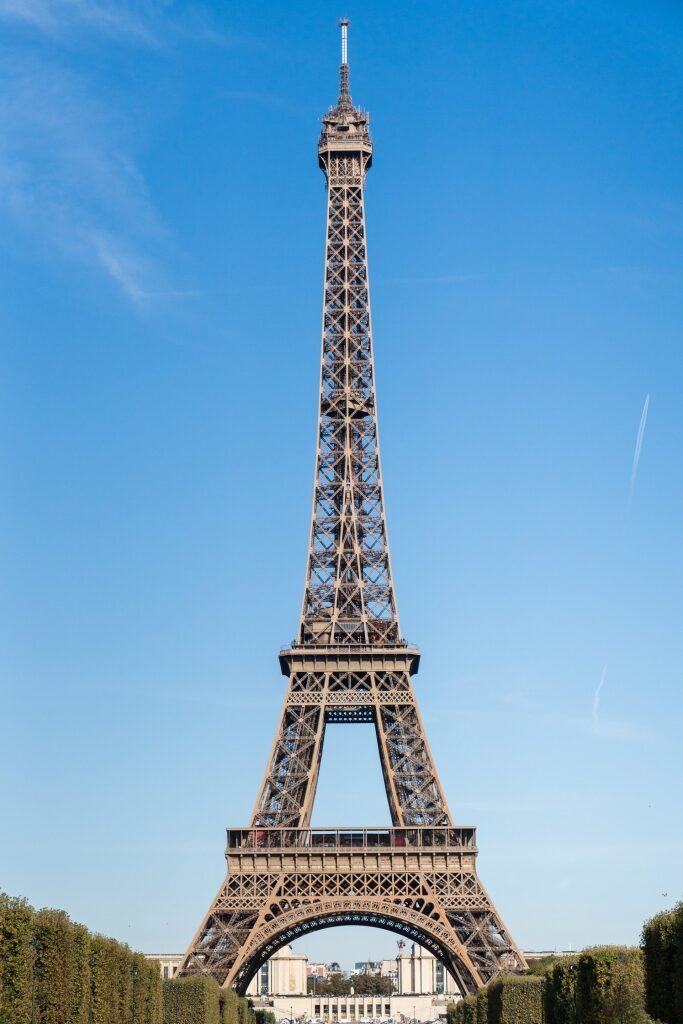
Eiffel Tower in Paris, France
A beacon over the City of Lights, the 1,063-foot-high Eiffel Tower—soaring over the southwest side of the city, from its base in the 7th arrondissement—has become a symbol synonymous not just with Paris, but France as a whole.
Conceptualized by French engineer Gustave Eiffel as a temporary yet revolutionary structure for the 1889 World’s Fair, it’s hard to imagine that the open-lattice, wrought-iron tower was destined to be demolished after just 20 years.
Indeed, the tower’s unusual aesthetic was a matter of great public controversy, but, ultimately, it was spared from demolition, thanks largely to its utilitarian potential as a telecommunications tower. Today, the city’s signature spire is a firm fixture on the Parisian cityscape, marking one of the most famous landmarks in Europe—and the world.
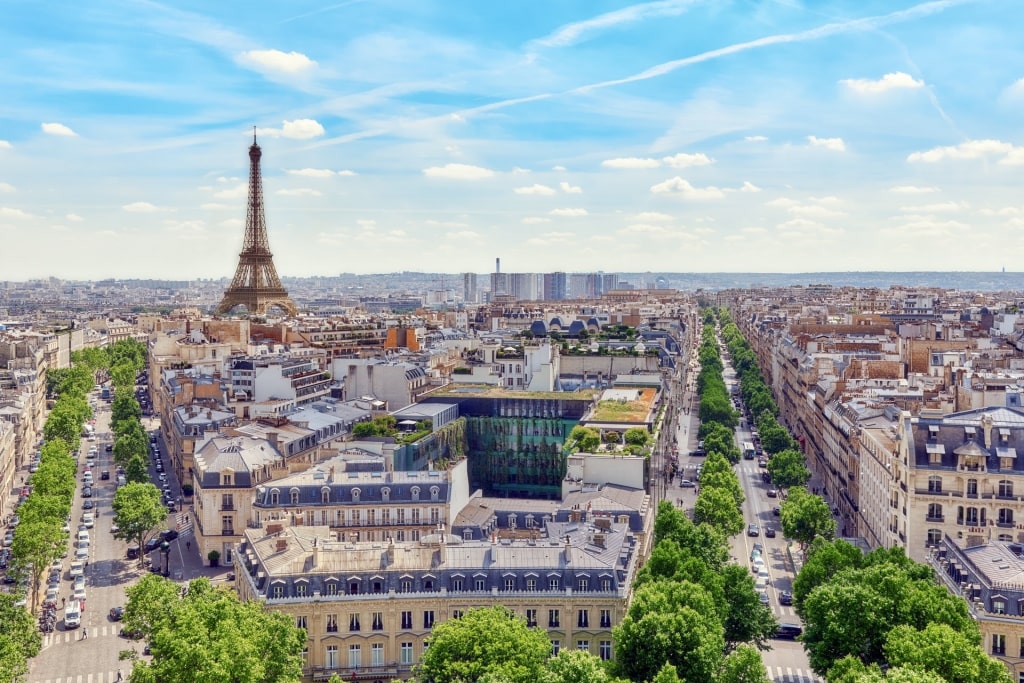
Paris, France
Any visit to Paris is defined by the backdrop of the colossal tower’s thin frame, looming in the distance (bonus: it provides a reliable orientation point for visitors). And, of course, the city views from atop are unsurpassed—a combination of elevators and stairs will whisk you up to three tower levels and viewing platforms, with varying attractions like a Champagne bar, Michelin-starred restaurant, and transparent glass floor.
The tower is arguably even more breathtaking at night, when it sparkles in the intermittent illumination of thousands of twinkling lights. France is known for its Eiffel Tower views, so soak up some of the most dramatic from the Palais de Chaillot esplanade, just across the Seine River.
Read: One Day in Paris: The Ultimate Itinerary
2: Colosseum, Rome
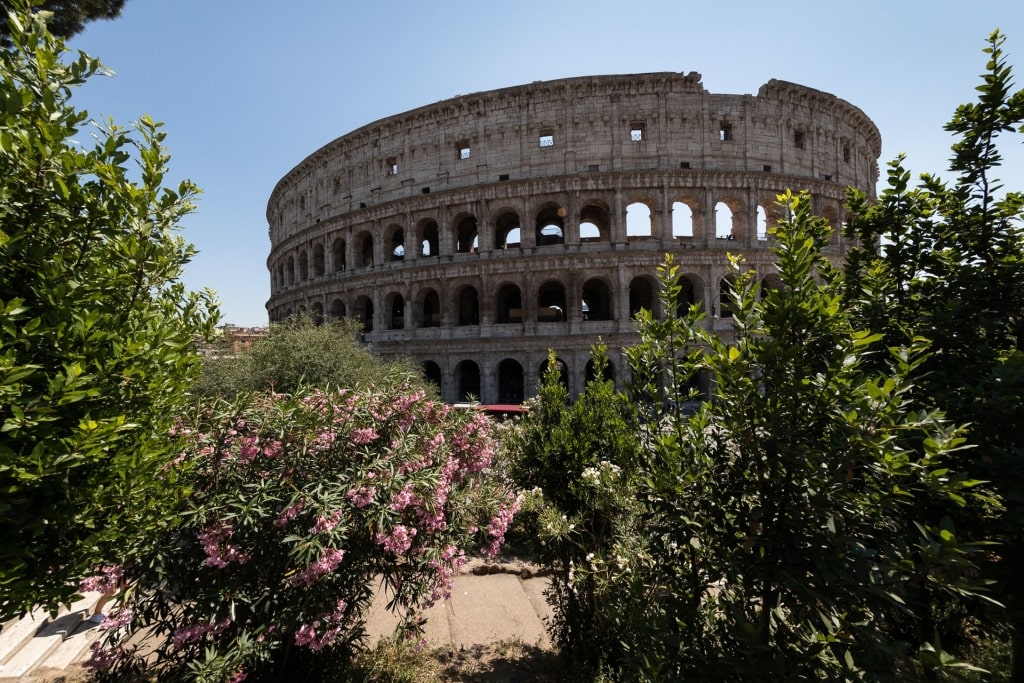
Colosseum in Rome, Italy
Not only is it one of the most famous landmarks in Europe, but Rome’s Colosseum is also an enduring symbol of the ancient world. Indeed, the enormity of the Colosseum is as much a thing to behold today as it was when it was constructed nearly two thousand years ago, on order of emperor Vespasian in AD 72. It was ultimately completed by his son and successor Titus in AD 80 and was then known as the Flavian Amphitheatre.
Located just east of relic-littered Palatine Hill in Rome, the massive stone and concrete structure measures 160 feet tall with a circumference of 1,788 feet—a mind-boggling scale for the times. Contemplate it while walking its perimeters, taking note of the travertine-clad walls and trio of tiered seating levels, with arches capped by differing column styles (Doric, Ionic, and Corinthian). Note that above, a massive retractable velarium (awning) once shielded spectators from the elements.
Inside the engineering feat of its elliptical bowl, you can imagine ancient scenes from the gladiators and wild beasts that once battled here at the height of the Roman Empire, where some 50,000 spectators took in brutal and gory scenes of combat.
Read: Fascinating Roman Landmarks
3: Parthenon, Athens
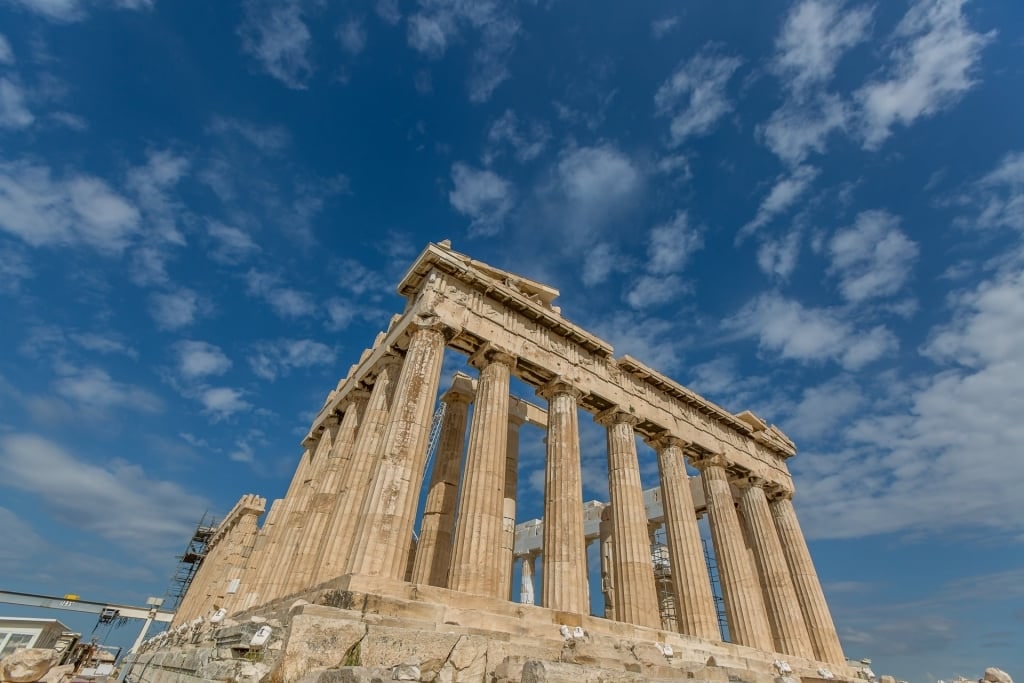
Parthenon in Athens, Greece
Another icon of European antiquity, the cream-colored, marbled Parthenon temple is the crowning glory of Athens’s rocky Acropolis hilltop (the sacred heart of the ancient city). The picture-perfect shrine features a harmonious colonnade of Doric columns and belvedere overlooking Athens.
One of the most important Greece landmarks, the monument was commissioned by the Athenian statesmen Pericles in dedication to Athena Parthenos, the patron goddess of Athens (a massive gold-and-ivory statue depicting her likeness was once contained within) as well as to serve as the city’s treasury. Much of what remains of the temple today dates back to the mid-5th century BC.
A steep ascent on foot atop the Acropolis marks a journey back in time to the cradle of Western Civilization. Here, among the scattered Greek ruins of ancient days, the 2,500-year-old Parthenon, set at the crest of the Acropolis, remains supreme.
As a matter of conservation, visitors are not allowed inside the monument. However, taking in the exterior does not disappoint, with its 46 graceful columns and perch for sweeping city views.
To better imagine what the interior of the temple was once like, you can see numerous statues and artifacts that were once temple adornments in the nearby Acropolis Museum, one of the best museums in Europe. There, too, you’ll see a reproduction of the temple’s missing friezes, including of the so-called Elgin Marbles, which are currently displayed at London’s British Museum, to ongoing controversy.
4: La Sagrada Família, Barcelona
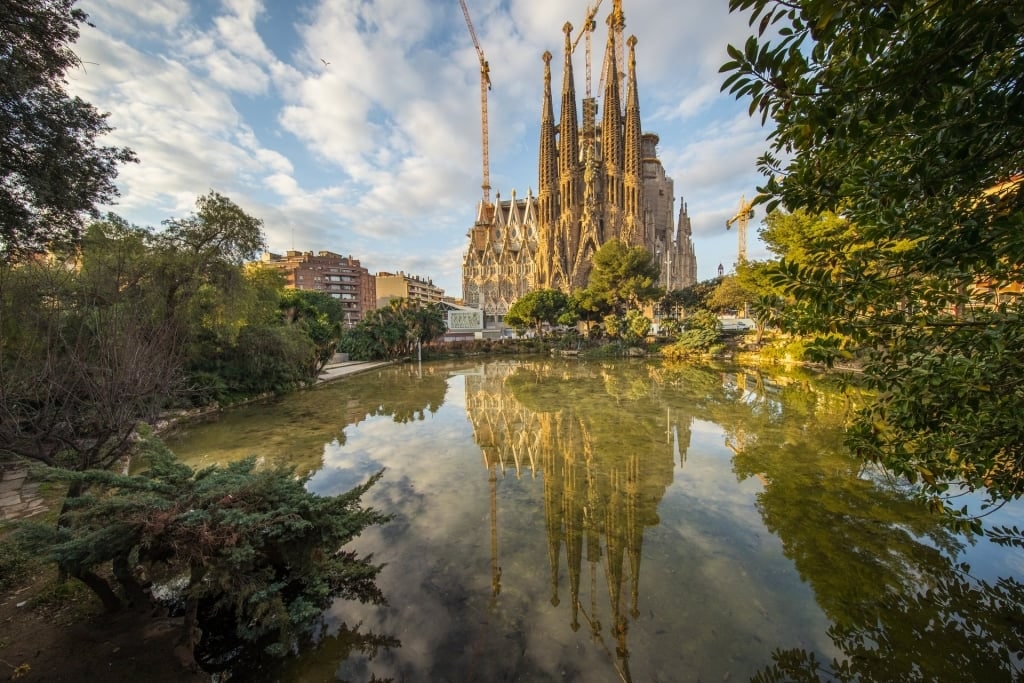
Sagrada Familia in Barcelona, Spain
The unparalleled achievement and obsession of celebrated Spanish architect Antoni Gaudí, La Sagrada Família in Barcelona is among the most famous landmarks in Europe—not to mention one of the grandest churches to ever grace planet Earth. One of a kind and constructed on a larger-than-life scale, the neo-Gothic/Art Nouveau basilica remains a work in progress for more than a century after its construction began in 1882.
One of the most beautiful places in Spain, the exterior is a wild display of intricate spires, towers, carvings, and sculptures that stretch skyward, to heights of 566 feet. Zoom in to pick out fine and fantastical details carved in stone—flora and fauna, nativity scenes and biblical stories, and gargoyles and dragons abound.
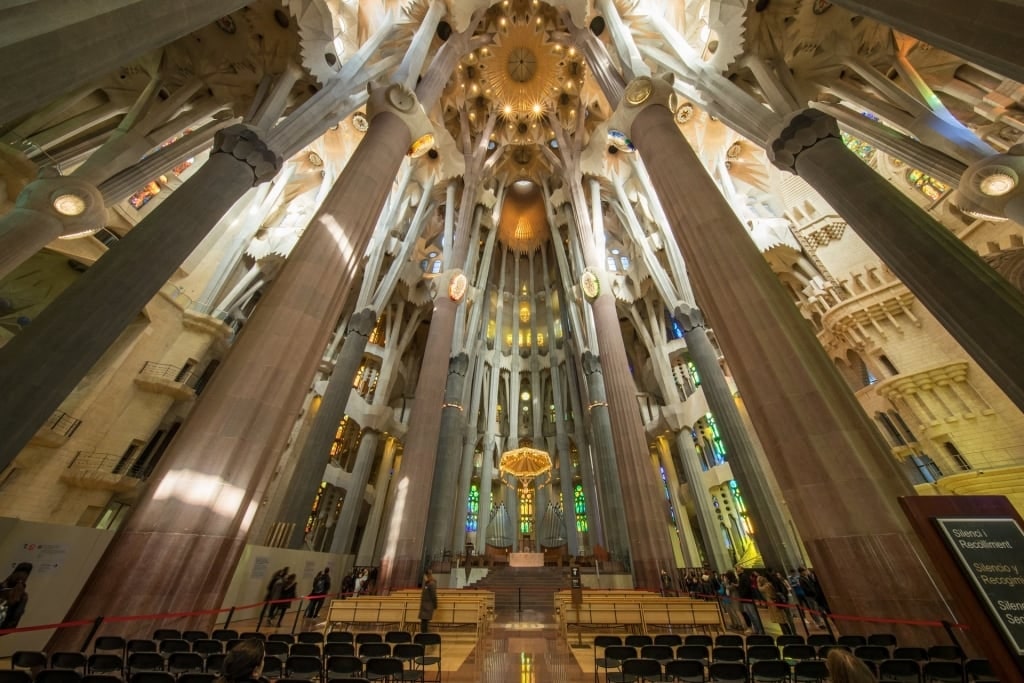
Sagrada Familia in Barcelona, Spain
Contemplating the structure’s soaring interior, with massive, twisting pillars reaching toward the central nave in a scene reminiscent of a forest canopy, might just make a believer out of the faithless (there’s room for 13,000 seated congregants to sit down and ponder).
Finally, the long-awaited target date for the completion of this unique building is within reach: 2026, which will mark a century after Gaudí’s death (he’s buried in the crypt underneath).
Read: Three Days in Barcelona
5: Stonehenge, UK
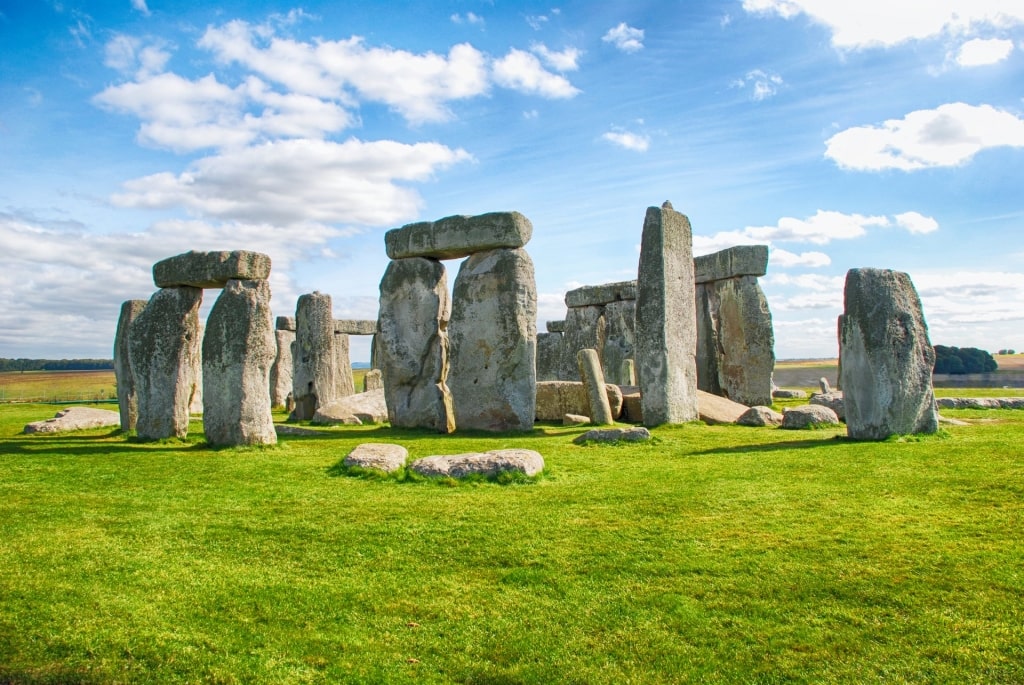
Stonehenge in Wiltshire, England
Mammoth and mysterious, this ancient circle of megalithic pillars in the English countryside, on Salisbury Plain, has fascinated generations of curious spectators. Widely touted as the most important prehistoric monument in Britain, with roots stretching as far back as 3000 BC, questions surrounding the significance of the site and its construction remain today.
Some historians say it was an astronomical observatory (the stones are perfectly aligned to the solstice sunrise/sunset). Others believe it was a ceremonial burial site. For engineers, the most peculiar aspect of the site is the heavy bluestone and sarsen stones themselves (weighing as much as 45 tons), some of which were moved great distances from as far away as neighboring Wales.
See what echoes of the past are revealed to you on a visit to the storied archaeological site—just keep in mind that you’ll have to ponder the mysterious monoliths from a distance, as it’s not permitted to touch the stones.
6: Leaning Tower of Pisa, Pisa
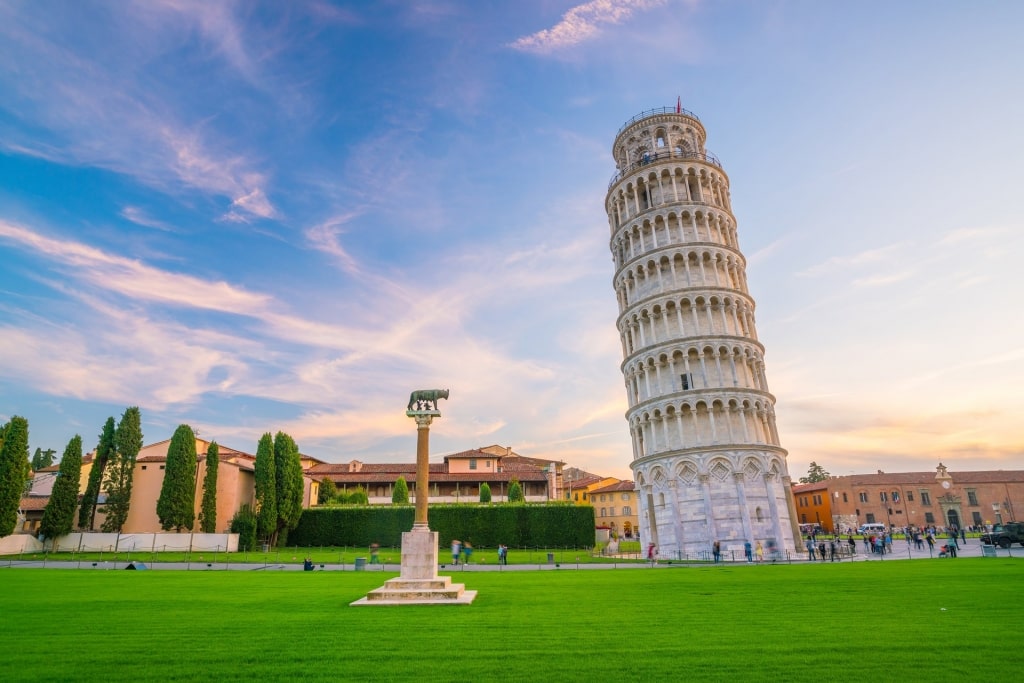
Leaning Tower of Pisa, Italy
Dating to 1173, this curious bell tower for the Pisa Cathedral in Pisa, Italy, was lopsided almost from the start, owed to the uneven settling of its foundation in the soft ground below. Architects over the centuries have tried (in vain) to compensate for the lean, but some 850 years later, the 185-foot-high Leaning Tower of Pisa leans (to some 4 degrees off the vertical) indeed.
But, alas, that’s what has made it one of Italy’s signature sights and one of the most famous monuments in Europe. Happily, attempts to stabilize the eight-story medieval tower, with its white-marble arcades, have helped ensure that it’s still stable and safe to climb the 251 interior steps for visitors today. You’ll get some nice views of the cathedral complex and surrounding Tuscan scenery from the top.
7: St. Peter’s Basilica, Vatican City
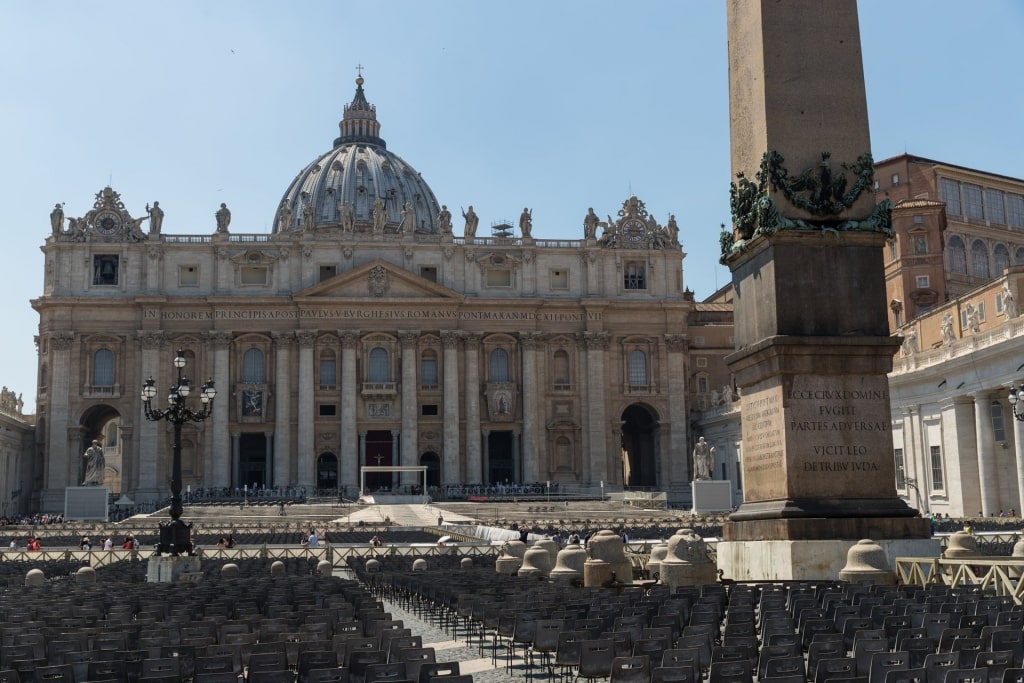
St. Peter’s Basilica in Vatican City, Italy
St. Peter’s Basilica, in the Vatican City (an enclave in Rome), is a principal shrine for the Catholic faith and the largest Christian church in Europe, marking a point of pilgrimage for Catholics the world over. But you needn’t be devout to appreciate the history and grandeur of the site.
Built atop St. Peter’s tomb, the Renaissance-style basilica was crafted in reverence to Jesus’s most prominent apostle, who became the first pope (and who is believed to have been crucified on an adjacent site during Roman times). The original foundations of this Roman church date to the 4th century AD (which was commissioned by Emperor Constantine), with a newer basilica built on top and further embellished by Italian masters throughout the 16th and 17th centuries.
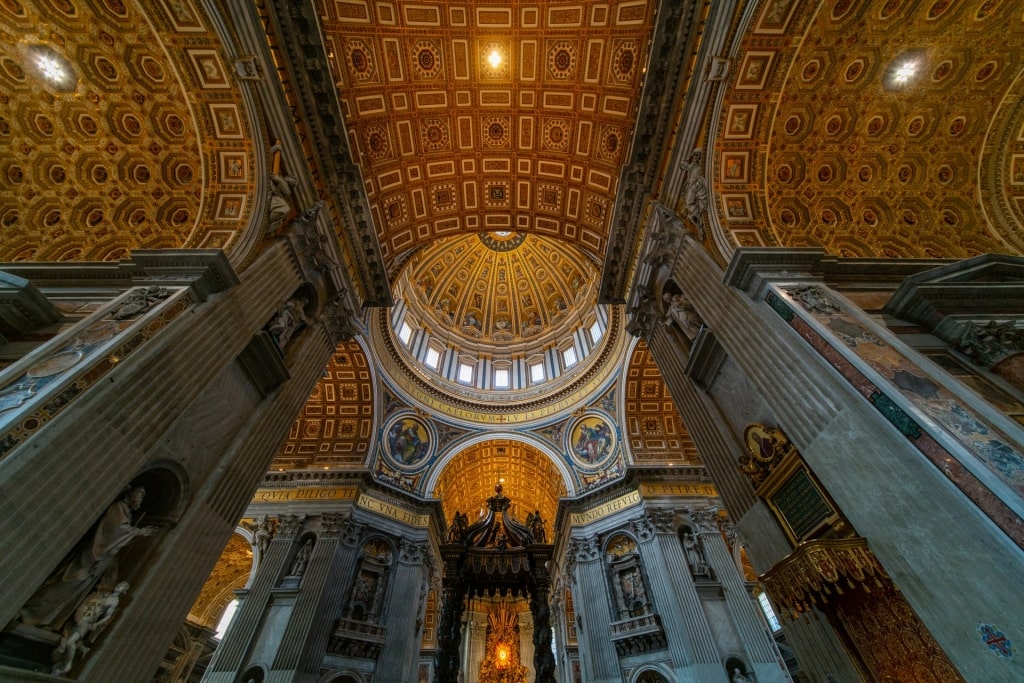
St. Peter’s Basilica in Vatican City, Italy
In the cavernous interior, a veritable treasure trove awaits, where marble and gilt meet a skyward dome and rich Renaissance and Baroque artwork from masters like Raphael, Michelangelo, and Bernini. Showstoppers include Michelangelo’s graceful Pietà, Bernini’s bronze baldachin over the papal altar, and Michelangelo’s 448-foot-high dome. Climb (or take an elevator ride) up for a closer look at the massive dome’s detailing—with bonus Vatican City views. Visits to the papal tombs in the Vatican grottoes and to the tomb of St. Peter can also be arranged.
Out front, the elliptical, colonnaded, Bernini-designed piazza stands in the shadow of St. Peter’s façade—this is also the setting for regular papal audiences, filled in with pilgrims who gather here for blessings from the head of the Roman Catholic church.
8: Mont-Saint-Michel Abbey, France
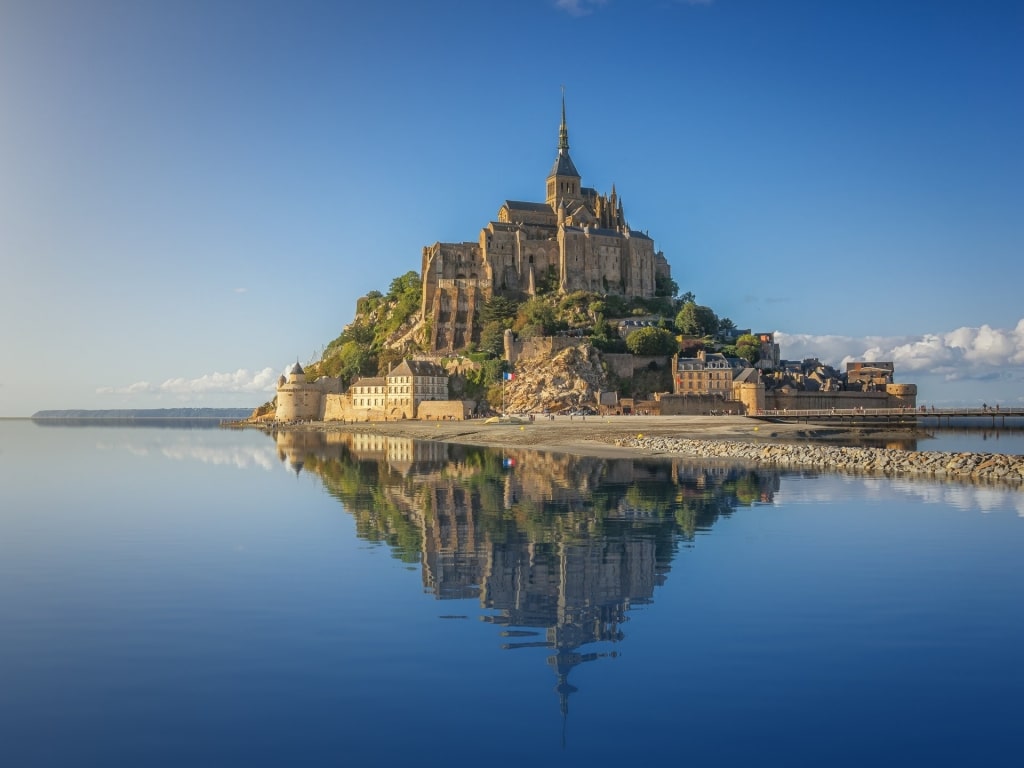
Mont-Saint-Michel Abbey in Mont Saint-Michel, France
One of the most unique places to visit in Europe, this UNESCO-protected abbey off the coast of Normandy in northern France is the crowning glory of Mont Saint-Michel, a rocky, fortified islet that rises dramatically out of the surrounding bay. At least that’s the scene when the tides are high—when they go out, the abbey’s pointed spire is instead juxtaposed against a landscape of shimmering sand flats.
Connected to the mainland by a bridge, a visit to the circular isle promises a time-travel escape, where narrow alleys lined with 15th- and 16th-century homes-cum-souvenir shops line the ascent to the renowned abbey. The Gothic-style, Benedictine abbey, founded in 906, was built to accommodate the monks who flocked to Mont St-Michel in service to the archangel St. Michael (Michel, in French—he purportedly appeared in visions to a local bishop here, back in the 8th century).
9: Pantheon, Rome
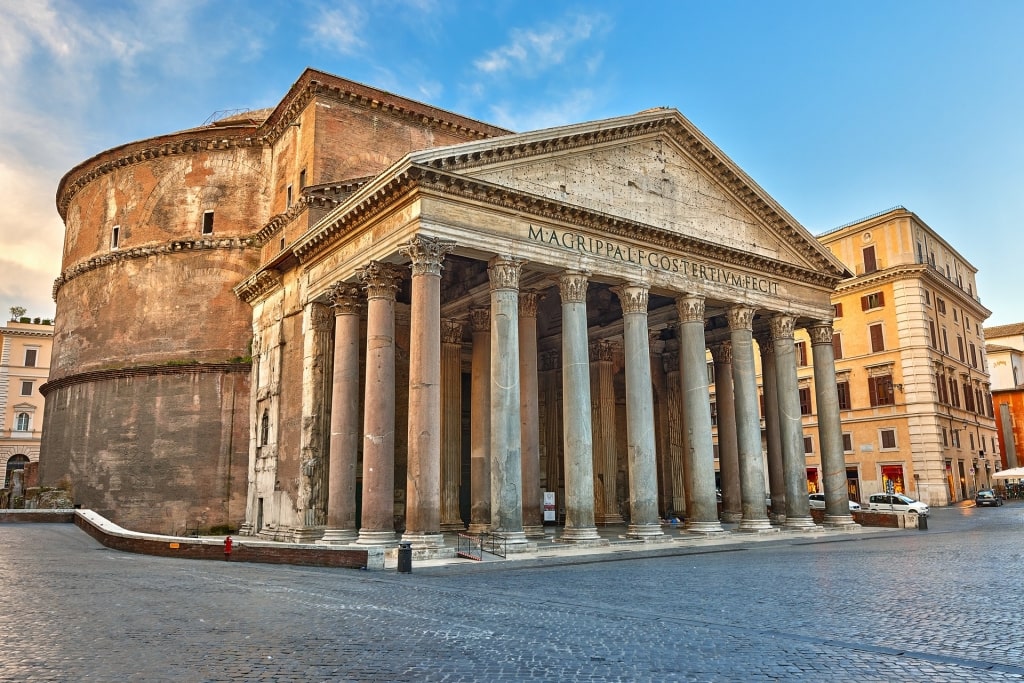
Pantheon in Rome, Italy
Ancient Roman temple turned Catholic church, Rome’s well-preserved Pantheon—derived from the Greek words pan (all) and theos (gods)—has been wowing mortal (and perhaps immortal) crowds for over two millennia. Originally built in 27 BC by the statesman Agrippa before being reconstructed in the early 2nd century AD, under order of Emperor Hadrian, this glorious relic of ancient Rome remains remarkably intact.
Step inside the oversized bronze double doors and beyond the imposing 16 Corinthian columns standing guard outside to really grapple with the massive scope of this architectural marvel. Measuring a perfect 142 feet wide by 142 feet high, its harmonious dimensions incorporate a soaring concrete dome punctuated by a 27-foot-wide oculus (which was meant to bring in light and represent a connection between the temple and the gods).
Once you stop craning your neck, do seek out the tombs of Italian kings Vittorio Emanuele II and Umberto I and of Renaissance artist Raphael that lay inside—not a bad final resting place.
Read: Best Places for Solo Travel in Europe
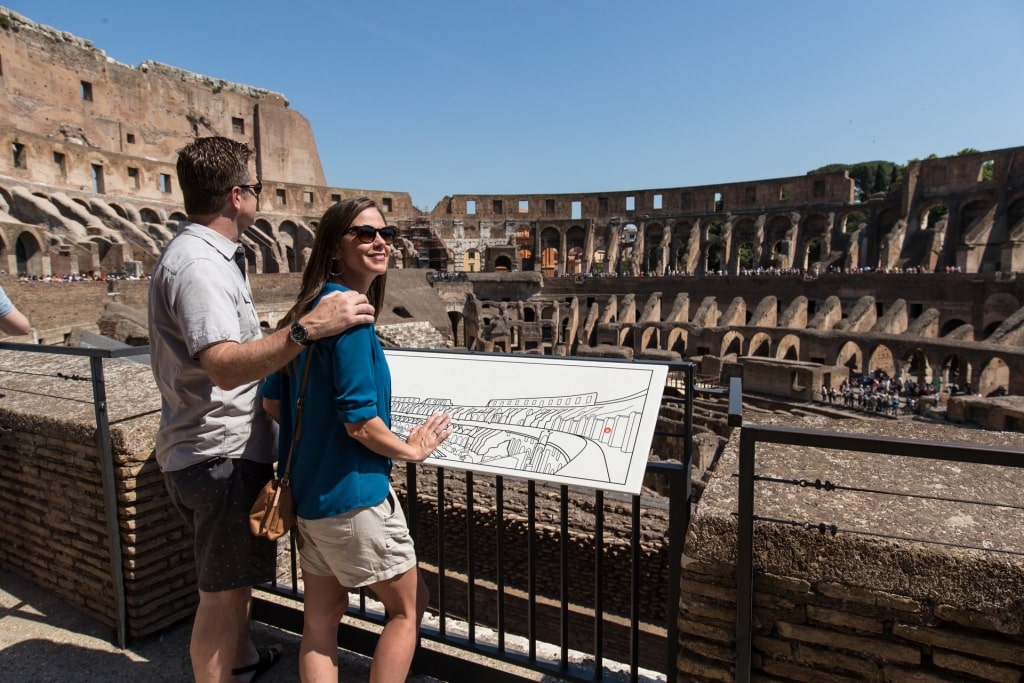
Colosseum in Rome, Italy
What do all of these famous landmarks in Europe have in common? You can visit all of them while sailing around Europe on a dream cruise vacation.
Browse European cruise itineraries on our website and be on your way to a bucket-list European vacation today.
